
Post
5S GUIDE - A LEAN MANUFACTURING TOOL
Post
BORROWING LEAN MANUFACTURING CONCEPTS FROM THE AUTOMOTIVE INDUSTRY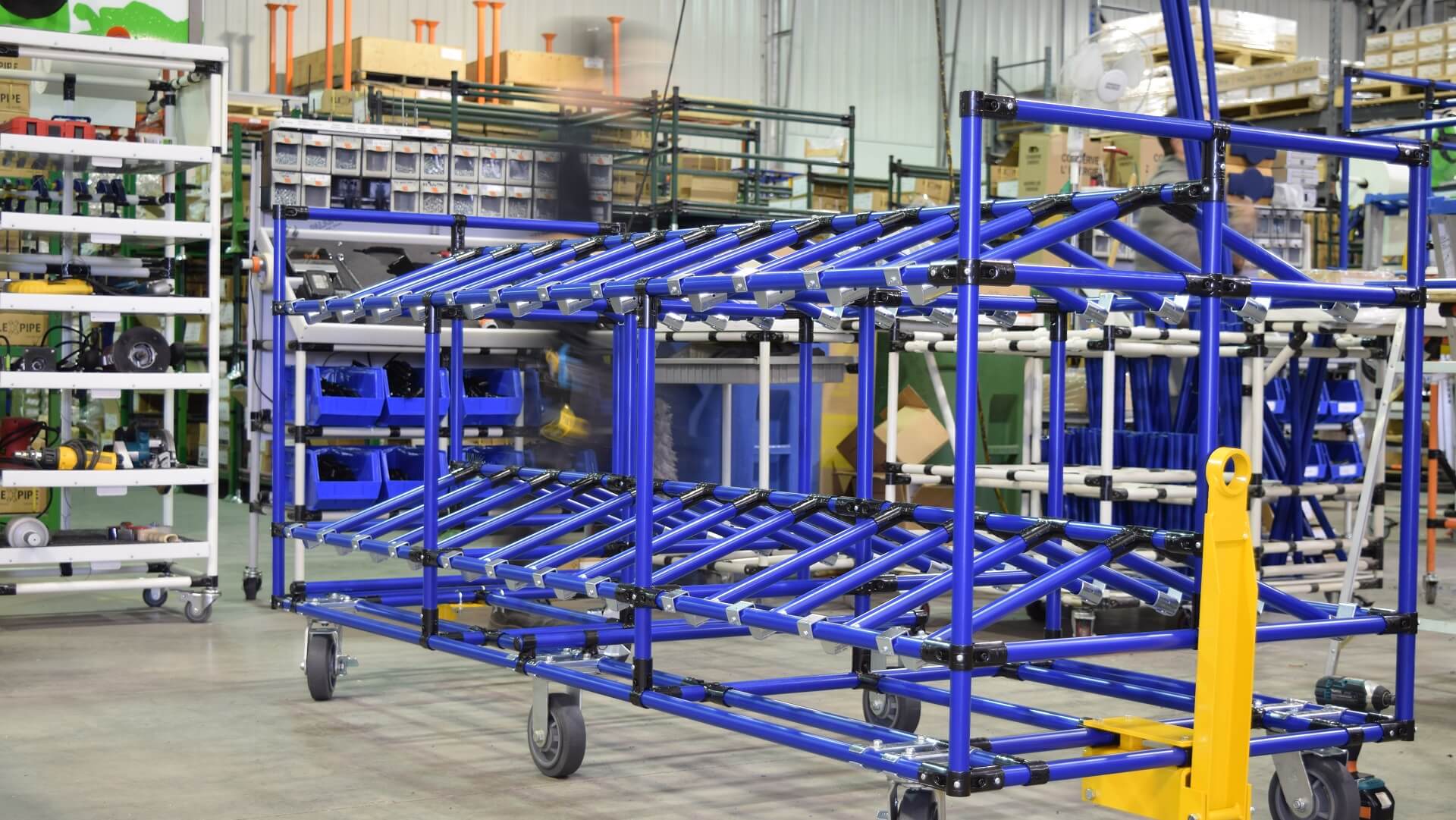
Page
STRUCTURESFlexpipe’s cold-rolled steel tubes are high-strength and durable steel tubes that have been compression tested by a third-party independent laboratory.
Flexpipe’s steel tube and joint system is a must-have resource for manufacturers adopting lean manufacturing. The ability to create customized and modular material handling structures not only reduces costs but also streamlines operations while helping to maximize the square footage of shop floors and production spaces.
A common concern among new customers is how much weight the steel pipes can support. One project in particular immediately puts these concerns to rest; a Flexpipe tube and joint cart was able to support a 2,000 lb concrete block.
Read on to learn more about the grade of steel Flexpipe uses, the grade’s benefits, the results of third-party compression testing, and how Flexpipe’s loading capacity calculator can be used to make high-strength carts capable of supporting 2,000 lbs.
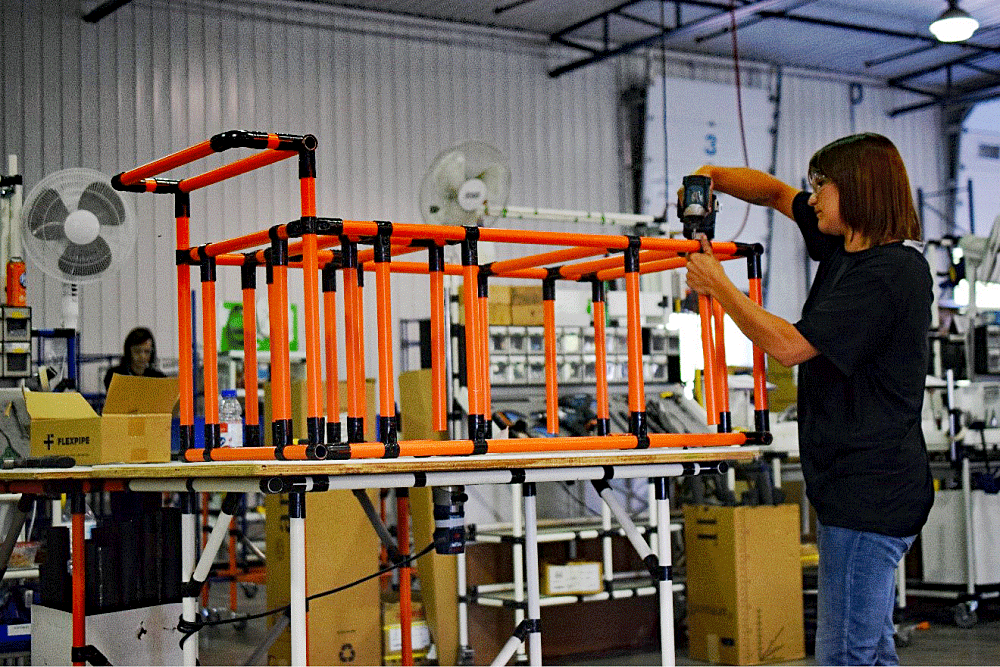
Julien Depelteau – Co-founder and VP of Strategic Development at Flexpipe – often encounters manufacturers who want to better understand the loading capacity of Flexpipe structures. New customers often ask how much weight the steel tubes can withstand or hold – to which Julien always answers with…
“It depends upon the thickness and length of the pipe.” – Julien
During these discussions, Julien explains that the steel tube and joint system is designed to be modular and scalable. The focus is to design the Flexpipe structure around the loading capacity of the pipe based on the pipe’s thickness and length, and then support the structure as needed with additional piping. Given that the pipes are inexpensive (approx. $1 per foot), adding a support to the structure is extremely simple and cost-effective.
“Loading capacity is a common question from individuals who have never designed or assembled a Flexpipe structure – which is good. We want them to think this way. Determining the loading capacity of a structure is the all-important first step.” – Julien
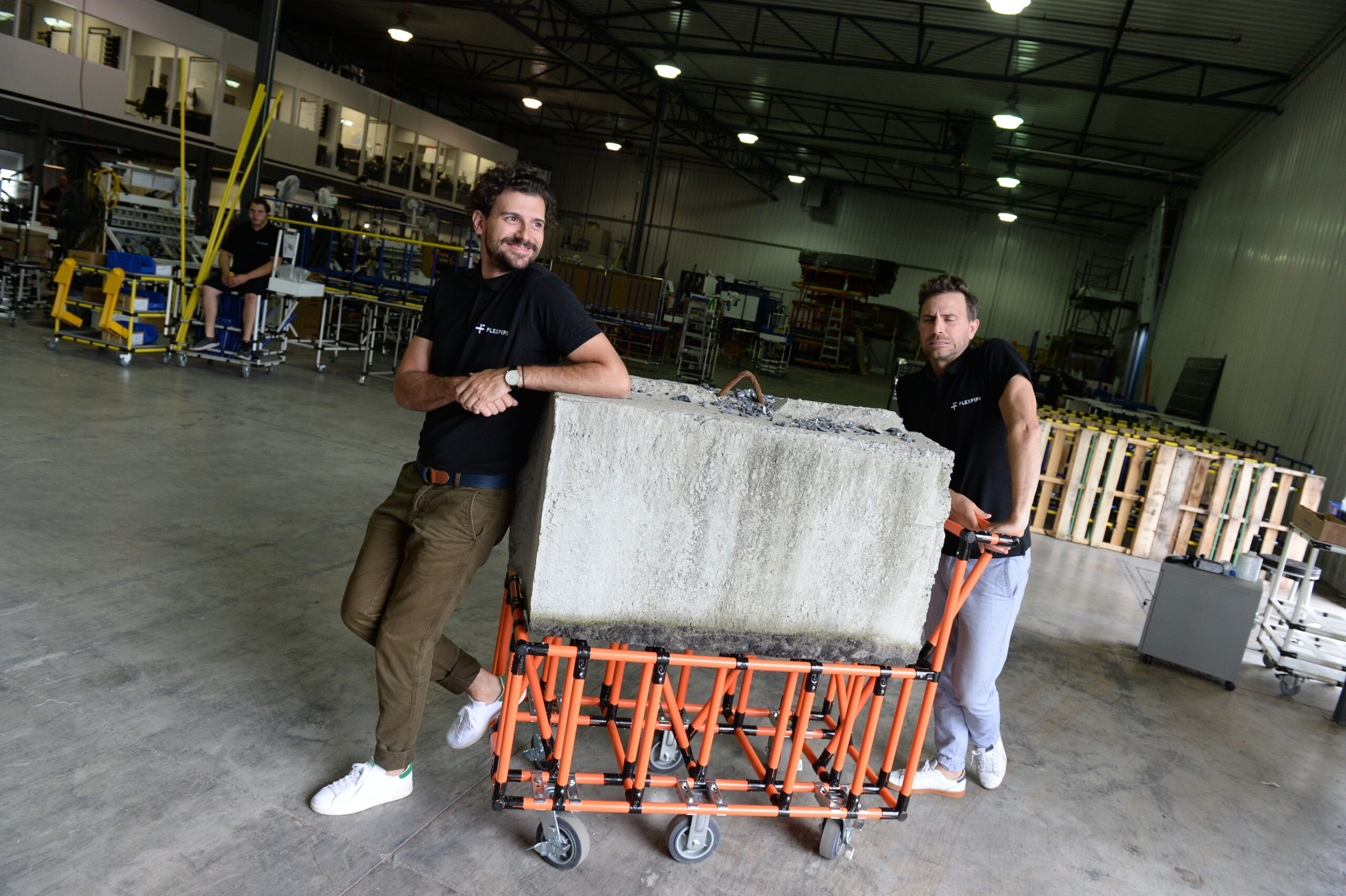
Flexpipe’s steel tubes and joints originated from the Toyota Product System. As the originator of lean manufacturing and continuous improvement methodologies, Toyota originally used bamboo as its main structural material. Gradually, over time, steel tubes replaced the bamboo.
Ultimately, the tube and joint system have been helping manufacturers improve processes, save money, and reduce their shop floor footprint for over 70 years. As stated by Julien…
“Customers are always surprised at how rigid, strong, and durable their Flexpipe structure becomes. The weight is determined by what you’re designing and how you assemble and support your structure.” – Julien
All kinds of manufacturers in various industries rely upon steel tube and joint systems. The early adopters of this scalable system include multiple aerospace Primes and major automotive manufacturers like Toyota, GM, Honda, Ford, and others. These stalwarts consider the steel tube and joint system as a critical part of any Kaizen or continuous improvement initiative.
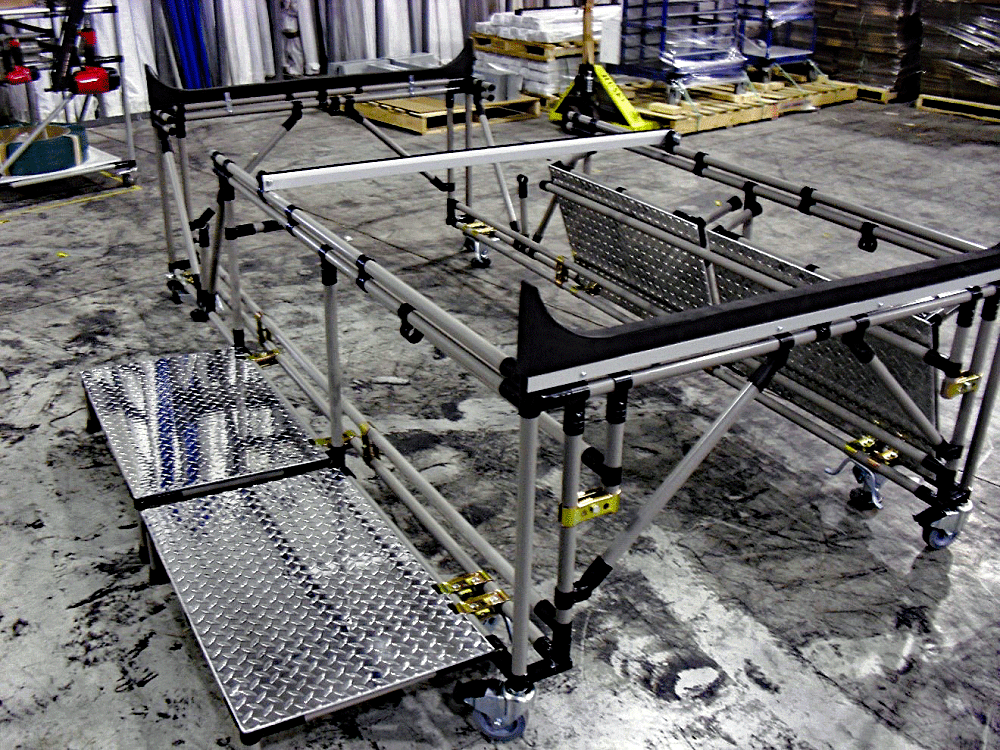
Perhaps there is no better testament to the strength of the steel piping solution than to consider how large some of the integrated assemblies can be in the aerospace and automotive markets. For these industries, it’s not just a material handling solution; Flexpipe’s steel tubes have been used to create customized workbenches, lean work cells, tables, storage units, and all kinds of miscellaneous manufacturing structures.
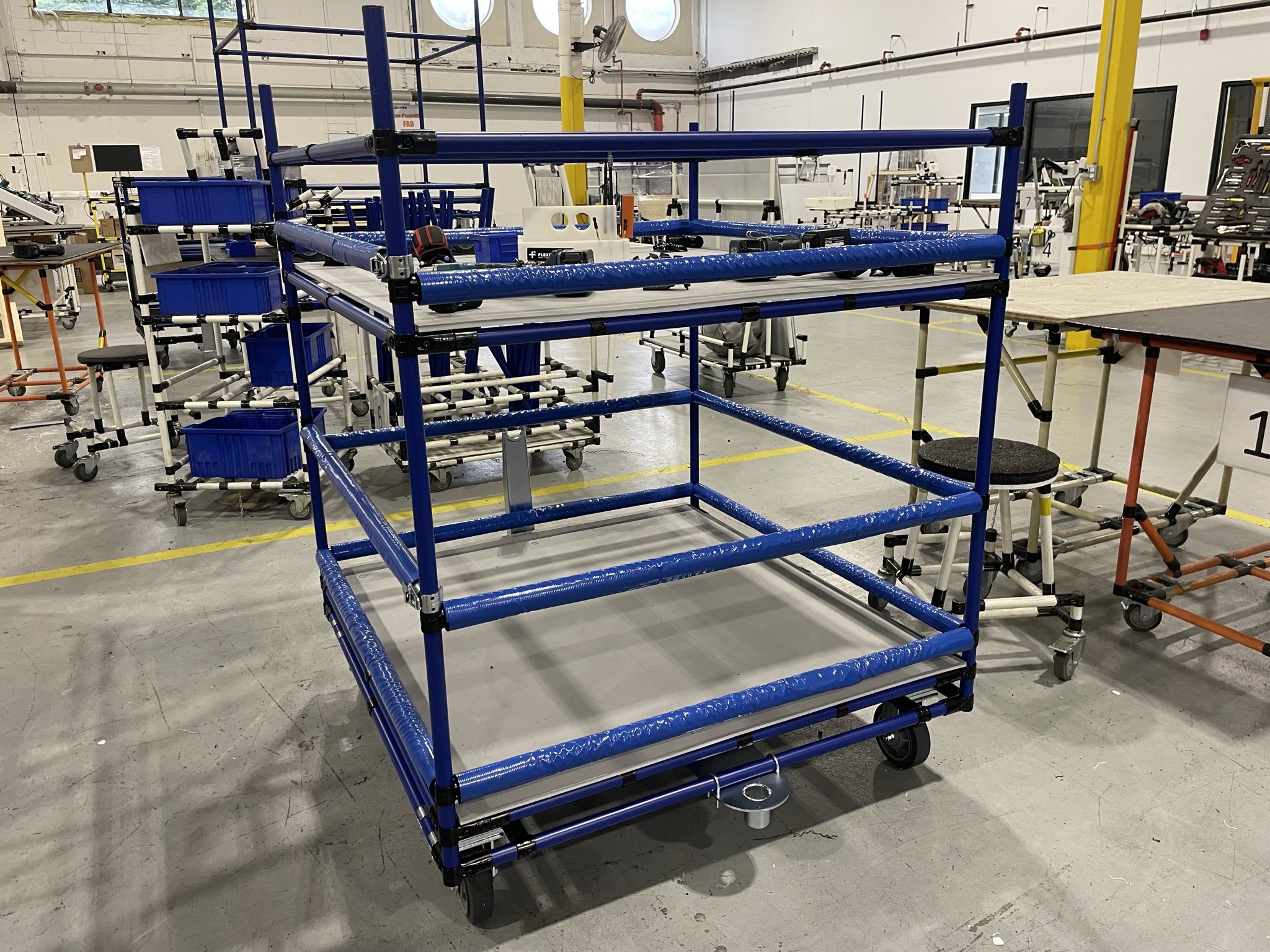
The system has also been used in transport as a means of securing and protecting complex parts and finished goods. In the aerospace industry, using steel tubes and joints – with protective foam around the tubes – to safely secure complex integrated assemblies is commonplace.
All Flexpipe steel tubes are made from Q235 Steel, which is cold-rolled carbon steel, commonly referred to as SPCC. The acronym SPCC stands for “steel plate carbon commercial.” SPPC is considered a Japanese JIS standard.
So, what does cold-rolled carbon steel mean exactly?
More importantly, how strong is cold-rolled carbon steel and what are its benefits?
Carbon steel is steel that has been infused with carbon to increase the steel’s strength and hardness. The higher the percentage of carbon, the stronger the steel and the more the steel can withstand impacts. However, carbon is susceptible to corrosion which is why Flexpipe’s cold-rolled steel is galvanized and further protected with a layer/coating of Polyethylene (PE).
Heat treatment processes are used in multiple industrial applications to increase the strength of steel. Typical processes include annealing, hardening, tempering/quenching, and normalizing. Heating the steel above its recrystallization temperature – or its recrystallization phase – changes the microstructure of the steel. This changes the steel’s grain size, its uniformity, and its distribution until the microstructure realigns.
By controlling the rate of cooling after heat treatment, companies can dramatically improve the mechanical properties of steel while increasing its strength, durability, and hardness. Hot-rolled steel is steel that has gone through a heat treatment process. It is essentially heated as it is being compressed through large industrial rollers.
Cold-rolled steel is simply hot-rolled steel that goes through an additional strength-hardening process. However, this time the steel is compressed by large rollers at room temperature. This additional strength-increasing step means cold-rolled steel is 20 percent stronger than hot-rolled steel and can withstand higher stress loads.
Flexpipe’s steel tubes are made from cold-rolled steel – which is 20 % stronger than hot-rolled steel.
Cold-rolled carbon Q235 Steel is a durable material known for its strength, its ability to handle high-stress (loads), and its excellent weldability. Cold-rolled carbon steel is used in large-scale residential and commercial construction and infrastructure projects. It is a high-strength steel that’s used in the railway industry, for the construction of bridges and commercial buildings and is a critical material for industrial pipes and fittings.
Again, the most important aspect of any Flexpipe structure is to ensure you’ve properly accounted for the loading capacity. You must know the weight a given length and thickness of pipe can support before plastic deformation – which is essentially the point at which the weight exceeds the steel’s yield strength.
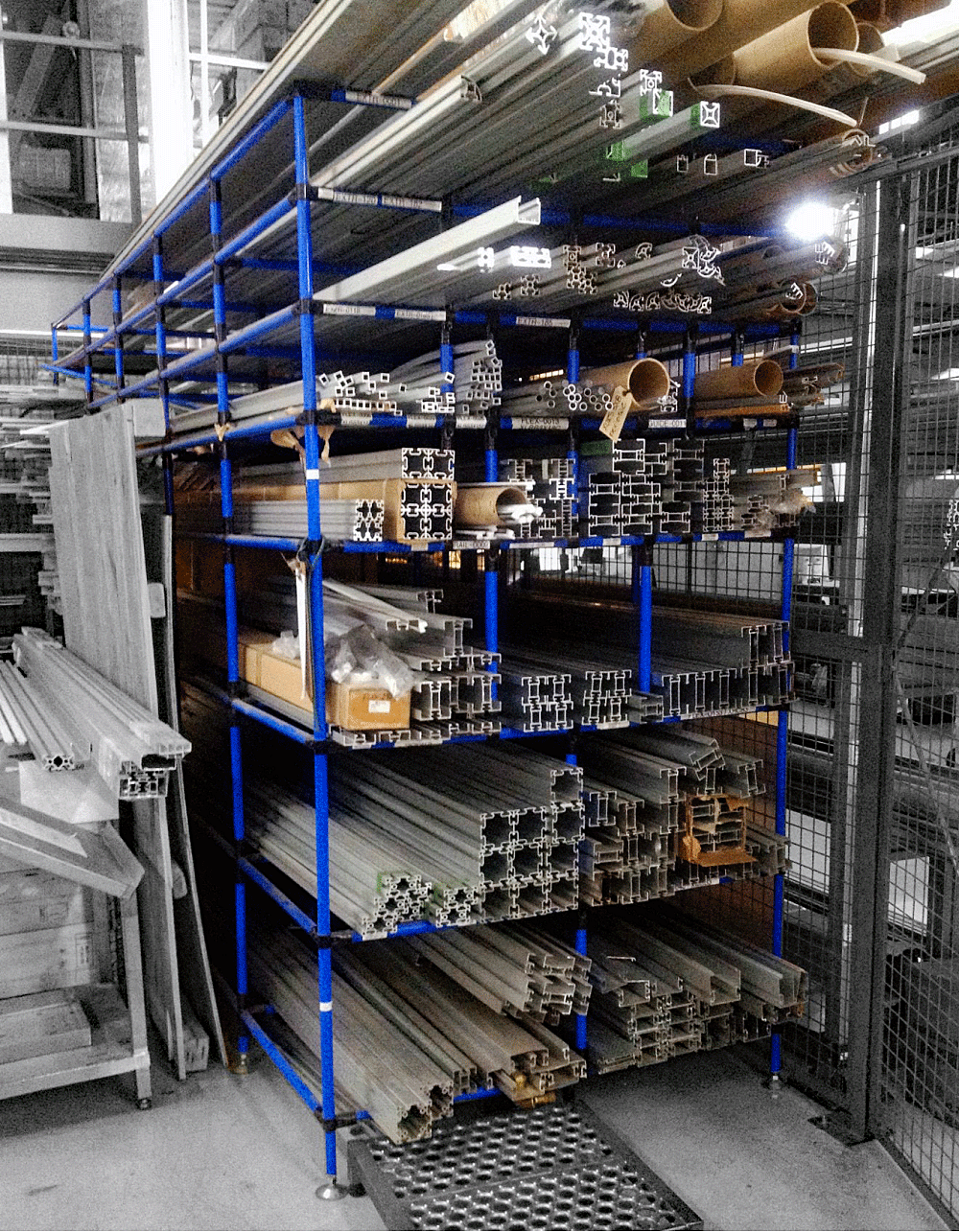
Once the weight surpasses the steel’s yield strength, distortion will be present in the form of buckling, bending, or twisting. This distortion is permanent. Since the ultimate tensile strength of Q235 Steel is already established at 400 – 550 MPa, and the yield strength is 250 MPa, Flexpipe elected to perform compression tests along the length of the pipes.

Compression tests are ideal because they can be done on different lengths and thicknesses of pipes. The shorter the length of the pipe, the more weight it can support – as outlined in the image above. Since Flexpipe customers cut different lengths based on different structural requirements, the compression testing needed to be done on multiple lengths of steel pipe.
Flexpipe did exactly that. The tests were done on steel pipe thicknesses of 0.7 MM, 1MM, and 2MM in varying lengths. These tests were performed on an Instron Machine by Micom Laboratories in June 2017 – which is a third-party independent testing laboratory.
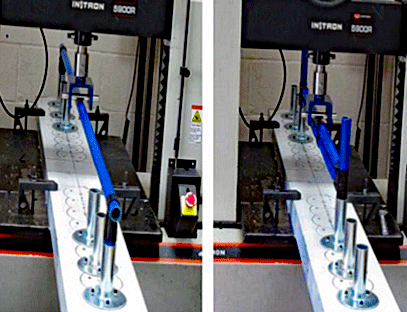
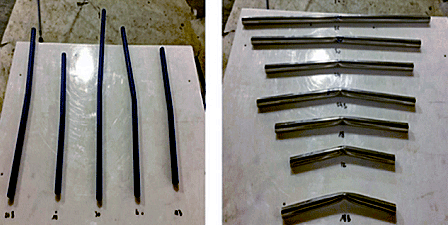
Instron 5900R machine shows the multiple circular rings on the jig. These circular rings correspond to the length of the pipe tested.
All lengths of pipes were tested. This included 12, 24, 36, 48, 60, 72, 84 and 96-inch pipes. The results were used to define Flexpipe’s loading capacity chart – a guideline for customers when designing and determining the amount of weight their structures can support.
Below is a chart on how much weight Flexpipe pipes can carry on a single point load.
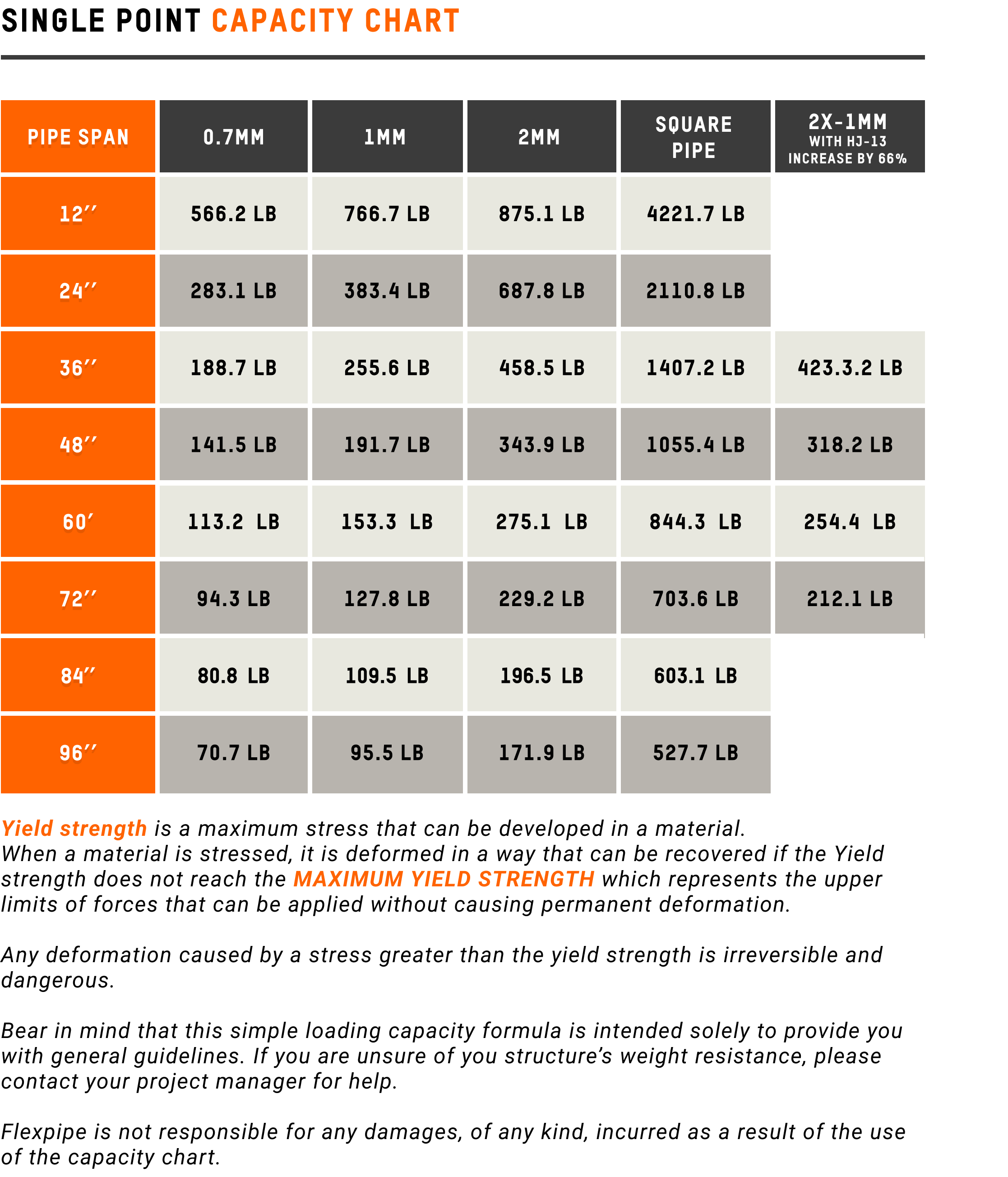
To further simplify the process, Flexpipe created the loading capacity calculator below. As stated by Julien…
“We created the Loading Capacity Calculator so that customers could determine the loading weight of their Flexpipe structures. This simple and easy-to-use tool was made possible because of the compression tests we did.” – Julien
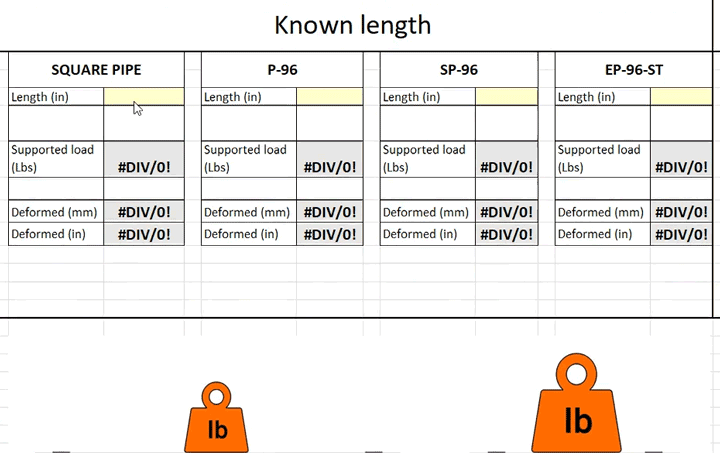

The locating capacity calculator is critical at the outset of any new design. This simple tool is an essential best practice tool. However, to accentuate just how durable a Flexpipe structure can be, a cart was constructed to support a 2,000 lb concrete block.
“We used a bulldozer to hoist the concrete block onto the cart and then moved the cart back and forth. That block weighs at least 2000 lbs!” – Julien
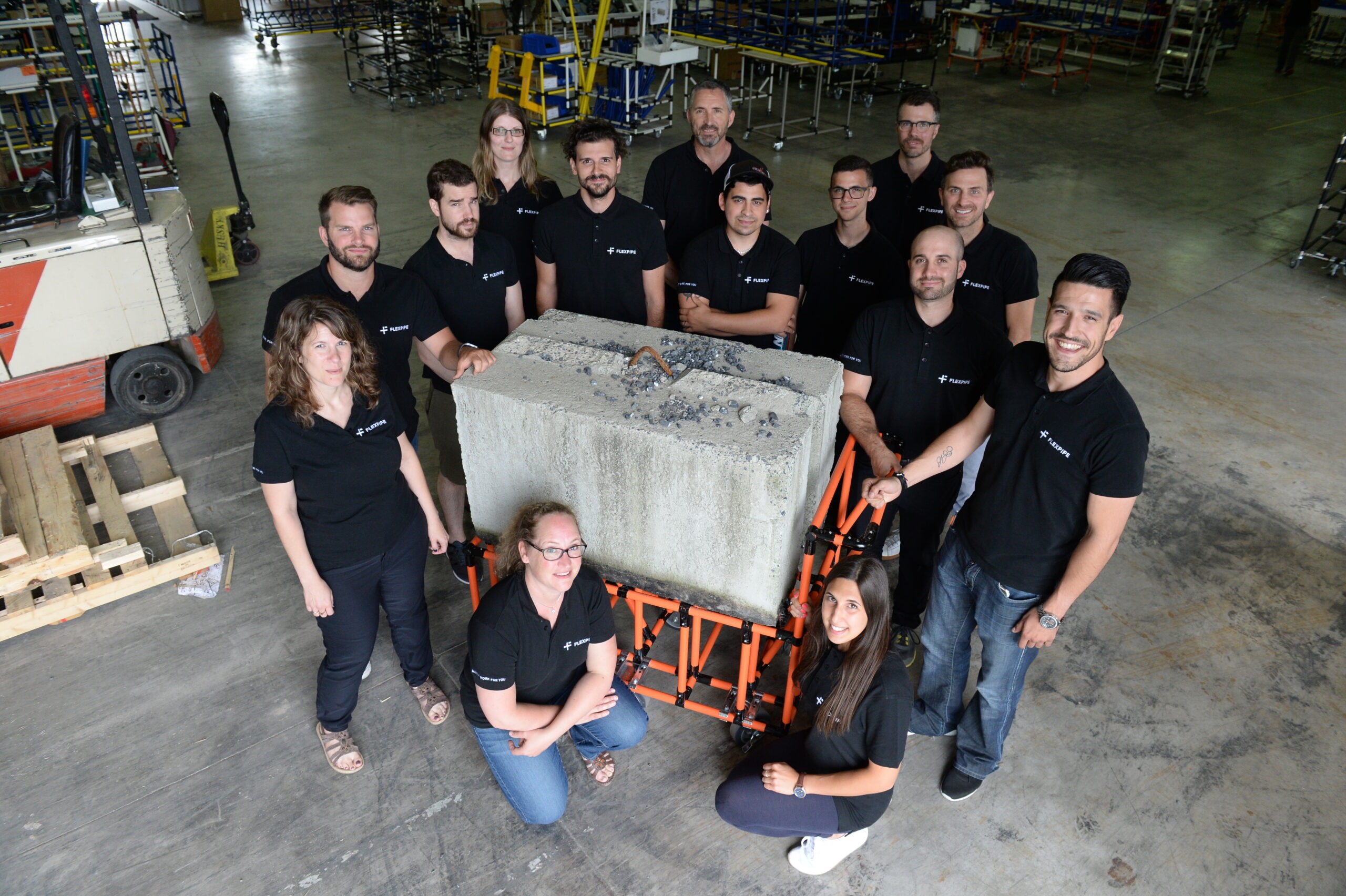
In the end, it’s always about the team.
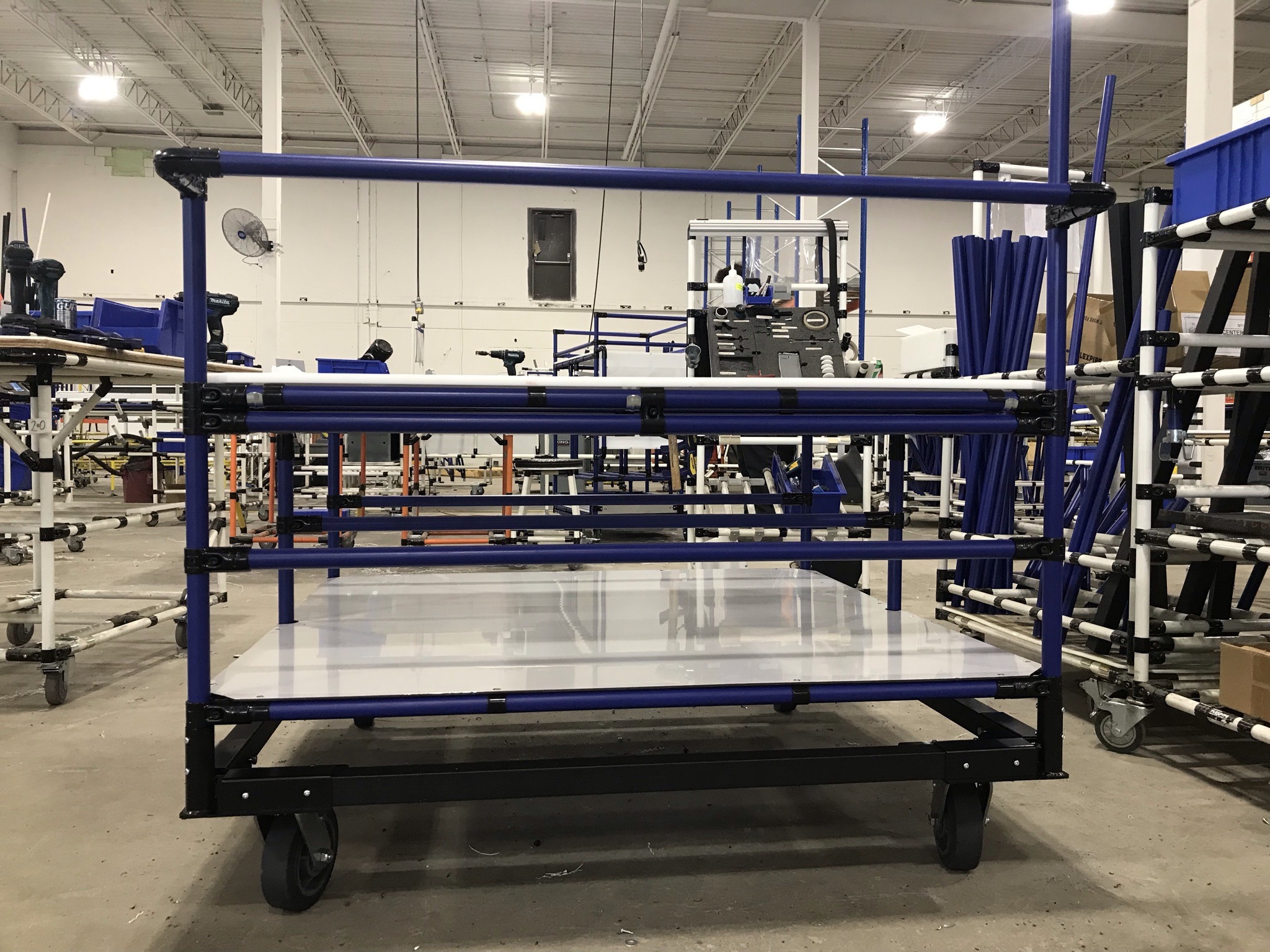
Square Pipes are a simple, cost-effective, durable, and robust solution for companies looking to increase the strength of their base on tuggers or other heavy-weight structures.
While Flexpipe’s round steel tubes have garnered significant recognition for their strength and versatility, there’s another innovative offering from the company that addresses specific structural needs – the heavy-duty square pipes. These are designed for robust structures, specifically in sectors that demand efficient space utilization and durability. Recognizing the importance of structures that can withstand substantial weight and stand the test of time, Flexpipe’s square pipes have been meticulously engineered.
Perfectly complementing the 5S methodology, these pipes promise minimized wear and tear, ensuring waste reduction and efficiency optimization. Their distinct geometric design offers unique structural benefits, making them ideal for projects that require strong linear edges or those who value a modern aesthetic. Seamlessly integrating with other Flexpipe systems, these square pipes stand as a testament to the company’s unwavering commitment to offering comprehensive, modular solutions to its clientele.
Flexpipe Inc. is recognized as an innovator, designer, manufacturer, assembler, and expert on modular and scalable steel tube and joint systems. The company has quickly become the go-to resource for companies wanting to adopt lean manufacturing best practices while reducing their material handling costs.
If you are interested in learning more about our customers’ success stories when using Flexpipe, then please go to our case studies section.